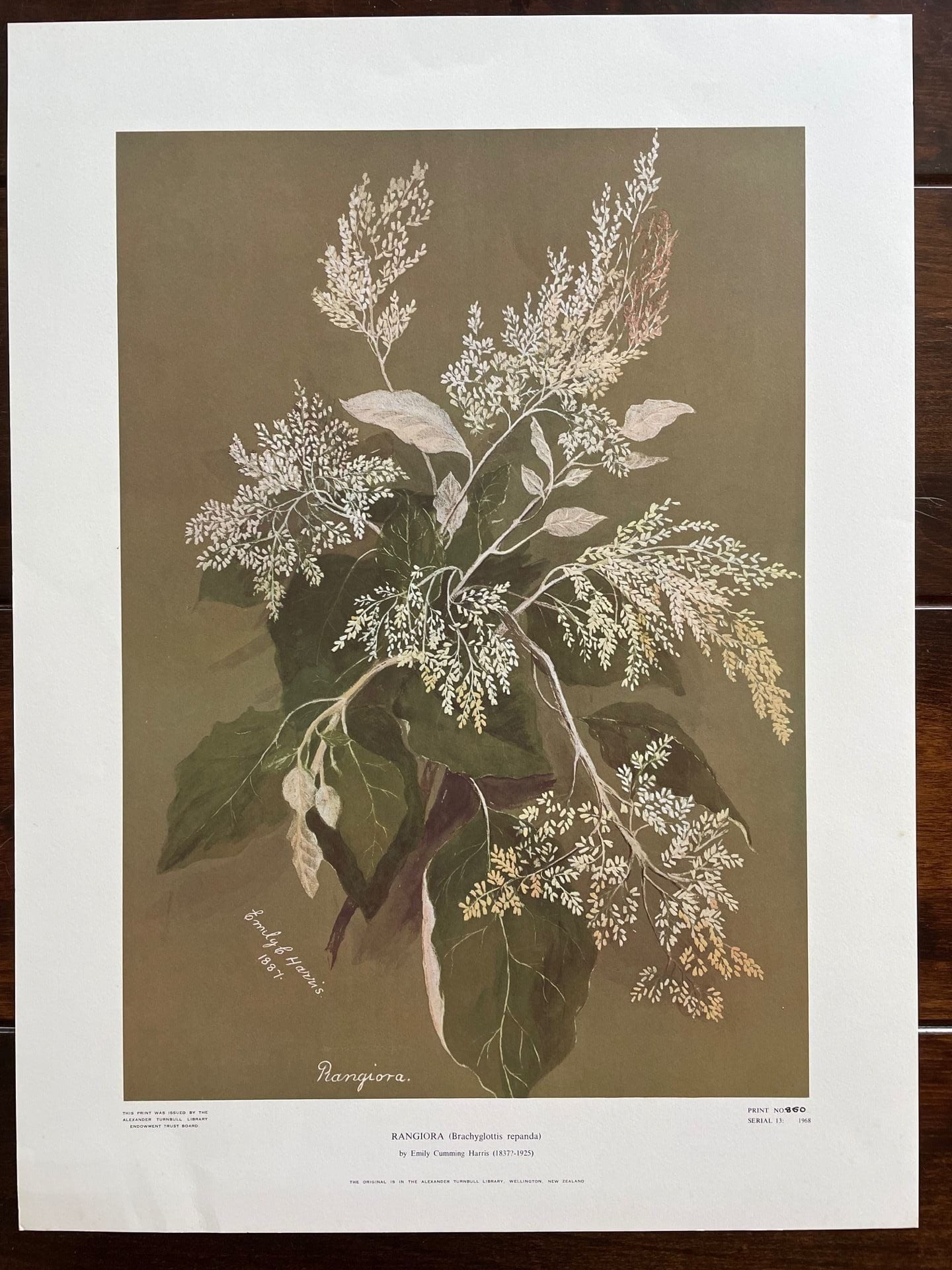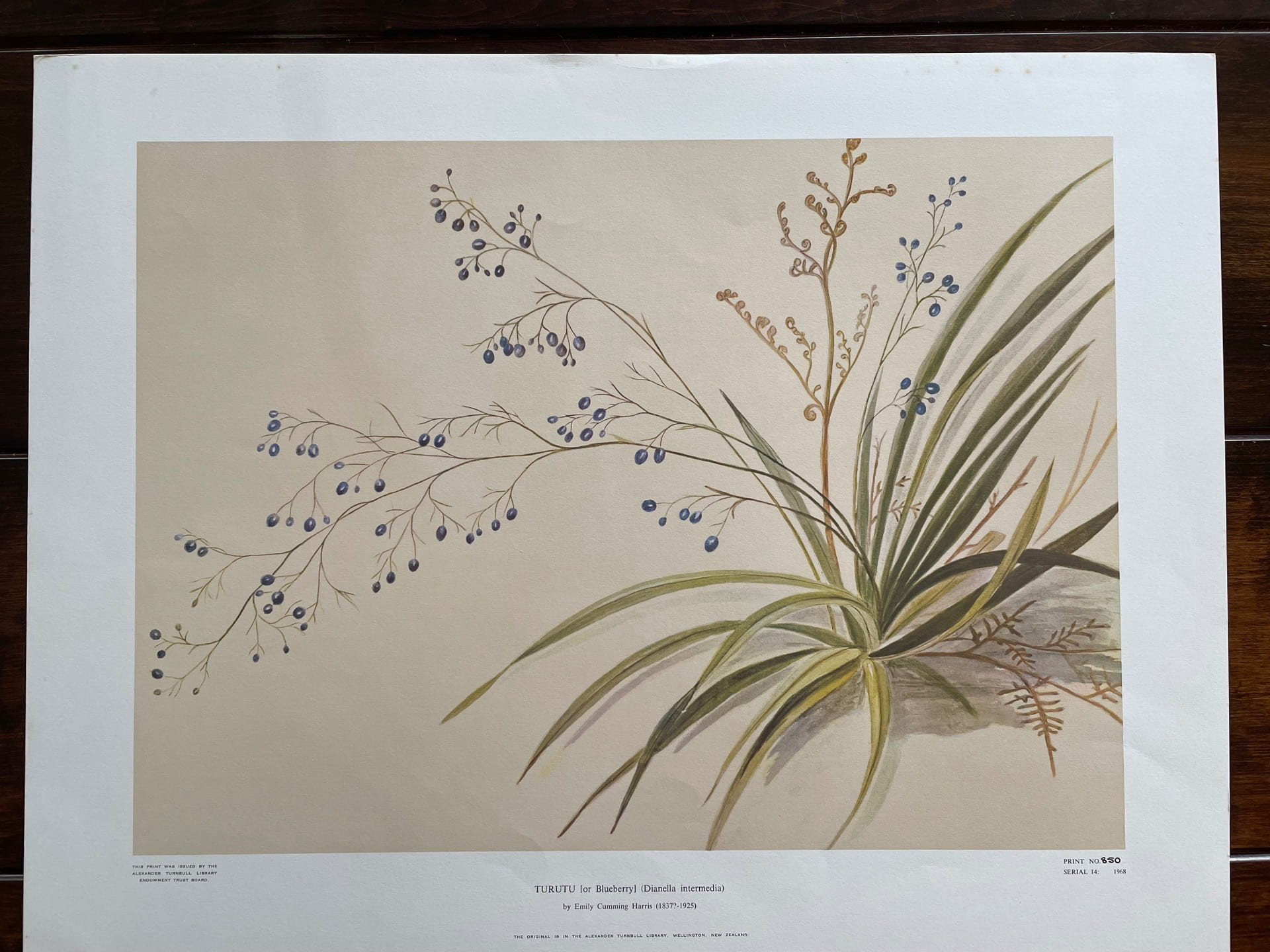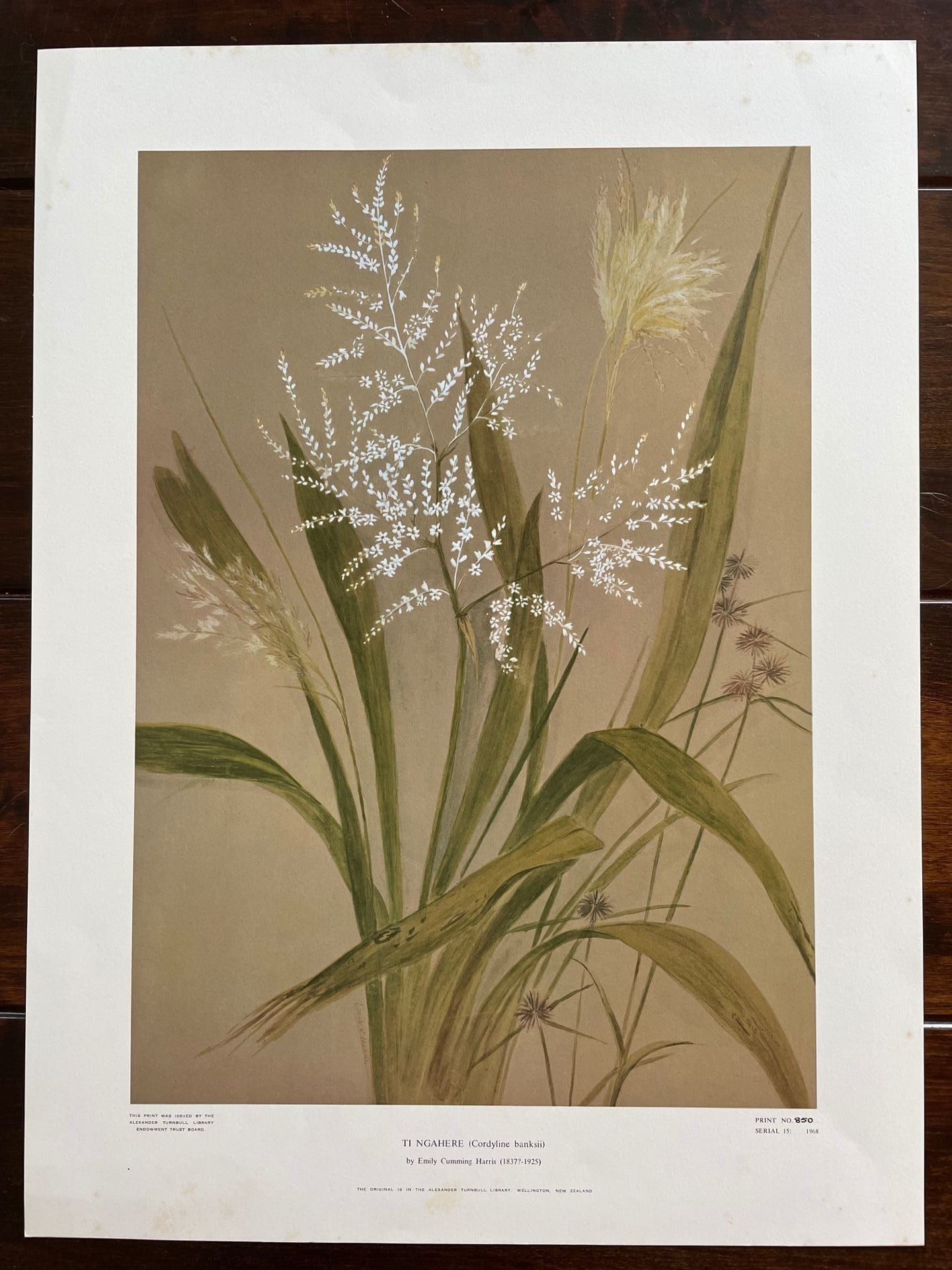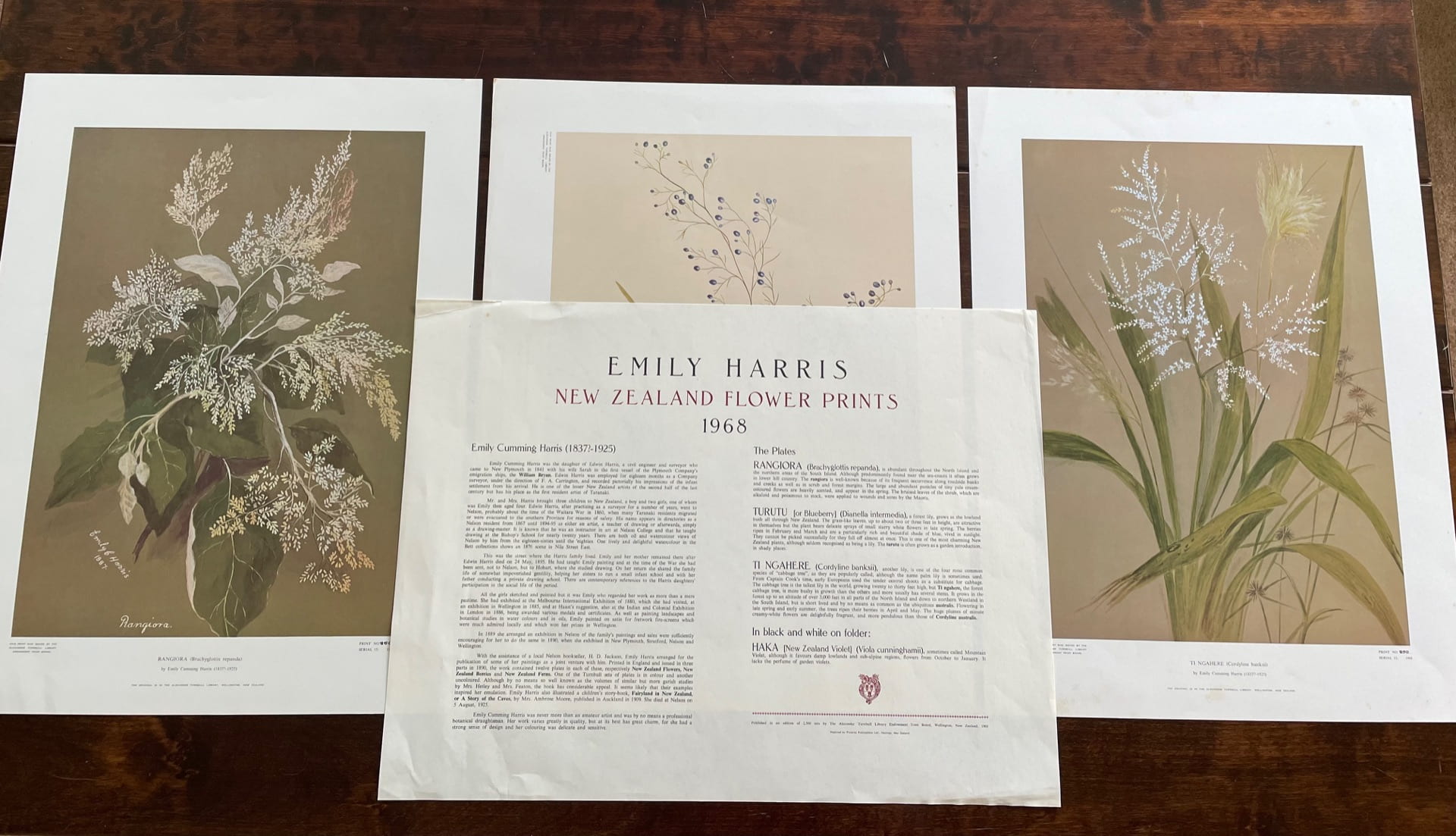TradeMe, as we have discovered before, occasionally unearths items related to Emily Harris much to our delight. Back in September last year, Catherine Field-Dodgson wrote ‘Treasure Hunting on TradeMe’ upon finding copies of Emily’s New Zealand Berries, Ferns, and Flowers. Later that year, I found a set of Alexander Turnbull Library prints of three of Emily’s paintings after having just the Rangiora print previously. The coloured photolithographs on sheets of 571 x 444 mm were printed in 1968 by the The Alexander Turnbull Library Endowment Trust in a run of 2,500. The Trust has published a number of prints over the decades, starting in 1963 with ‘The Queen’s Prints’ to mark the opening of the New Zealand House in London. The 1983 Turnbull Prints folder that these particular Emily Harris prints came in, rather the original 1968 folder, elaborates on the publication ethos of the prints:
“Such an emphasis by a library (or even an art gallery or museum) on the production, for sale, off copies of original items in its collections, seems strange to some. In fact it is an activity central to the purpose of the Alexander Turnbull Library as a national research library. Institutions with public collections have varied ways off making their collections available: what distinguishes a research library is its emphasis on reach and above all on publication as the most appropriate and effective means off making its specialised collections widely available. Through the ‘Turnbull Prints’ many thousands off New Zealanders have been able to get to know and share in the pictorial heritage in the national collections off the Alexander Turnbull Library”
The 1968 set of Emily Harris’s photolithographs comes with three prints ‘RANGIORA (Brachglottis repanda)’, ‘TURUTU [or Blueberry] (Dianella intermedia)’, and ‘TI NGAHERE (Cordyline banksii)’, and an infosheet which provides a biography of Emily’s family background and her career followed by further information on the flora depicted in the prints. The biography concludes:
“Emily Cumming Harris was never more than an amateur artist and was by no means a professional botanical draughtsman. Her work varies greatly in quality, but at best has great charm, for she had a strong sense of design and her colouring was delicate and sensitive.”
Below we share photos of the prints, not yet framed, with the matching description from the Alexander Turnbull Library Information sheet.

“RANGIORA (Brachglottis repanda), is abundant throughout the North Island and the northern areas of the South Island. Although predominantly found near the sea-coasts it often grows in lower hill country. The rangiora is well-known because off its frequent occurrence along roadside banks and creeks as well as in scrub and forest margins. The large and abundant panicles of tiny pale cream-coloured flowers are heavily scented, and appear in the spring. The bruised leaves of the shrub, which are alkaloid and poisonous to stock, were applied to wounds and sores by the Maoris.”

“TURUTU [or Blueberry] (Dianella intermedia), a forest lily, grows in the lowland bush all through New Zealand. The grass-like leaves, up to about two or three feet in height, are attractive in themselves but the plant bears delicate sprays of small starry white flowers in late spring. The berries ripen in February and March and are a particularly rich and beautiful shade of blue, vivid in sunlight. They cannot be picked successfully for they fall off almost at once. This is one of the most charming New Zealand plants, although seldom recognised as being a lily. The turutu is often grown as a garden introduction, in shady places.”

“TI NGAHERE (Cordyline banksii), another lily, is one of the four most common species of “cabbage tree”, as they are popularly called; although the name palm lily is sometimes used. From Captain Cook’s time, early Europeans used the tender central shoots as a substitute for cabbage. The cabbage tree is the tallest lily in the world, growing twenty to thirty feet high, but Ti Ngahere, the forest cabbage tree is more bushy in growth than the others and more usually has several stems. It grows in the forest up to an altitude off over 3,000 feet in all parts of the North Island and down to northern Westland in the South Island, but is short lived and by no means as common as the ubiquitous australis. Flowering in late spring and early summer, the trees ripen their berries in April and May. The huge plumes off minute creamy-white flowers are delightfully fragrant, and more pendulous than those of Cordyline australis.”
The information sheet also notes these details on an illustration that would have been included on the original 1968 folder:
“In black and white on folder: HAKA [New Zealand Violet] (Viola cunninghamii), sometimes called Mountain Violet, although it favours damp lowlands and sub-alpine regions, flowers from October to January. It lacks the perfume of garden violets.”
The matching originals, other than the outside illustration, can be found in the Alexander Turnbull Library: Rangiora, Turutu, Ti Ngahere respectively. The Alexander Turnbull Library is one of the biggest repositories of Emily Harris artwork, featuring not just these originals behind the prints or Emily’s NZ Mountain Flora and NZ Flowers, Berries, and Ferns but many other originals and sketches. We are currently working on bringing together a new section on the website to feature the stories behind how her artwork came there and the art available to view. Coming soon!
Lead writer: Brianna Vincent
Research Support: Michele Leggott


Can you please give me the price for Emily Cumming Harris prints
With thanks